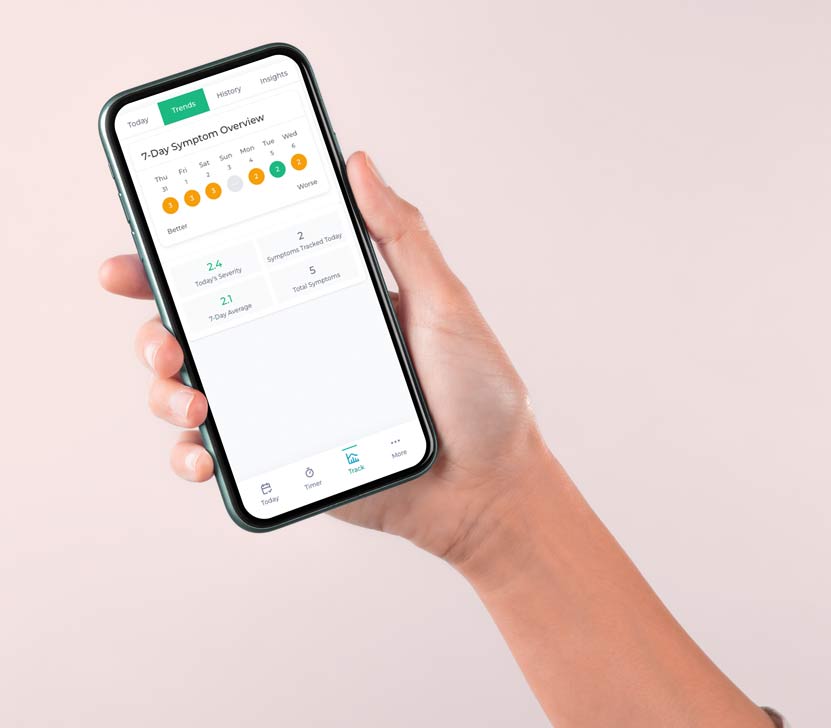Pacing is an evidence-informed strategy for managing chronic conditions by balancing activity and rest. Instead of the "boom and bust" cycle (doing too much on a good day and paying for it later), pacing helps you spread effort more evenly, reduce flare-ups, and protect against post-exertional malaise (PEM).
What is pacing?
Pacing is about doing the right amount at the right time. You set a sustainable baseline, break tasks into smaller chunks, and insert short recovery periods before symptoms spike. Over time, this helps you understand your personal thresholds and build routines that fit your body.
How pacing works (in plain steps)
- Find your baseline: the amount of activity you can do most days without a crash. Start conservatively.
- Plan with buffers: schedule micro-rests (2-10 minutes) between tasks; swap back-to-back demanding tasks for lighter ones.
- Track signals: monitor early warning signs like fatigue, pain, brain fog, or HR spikes to stop before you exceed limits.
- Adjust gradually: if stable for 1-2 weeks, consider a small increase (e.g., 5-10%). If not, scale back.
Apps for pain management and energy pacing
Many people combine pacing with apps for pain management and symptom tracking. The right app can help you log energy, spot triggers, and plan your day around sustainable goals. MyPace is designed specifically for this: track energy, avoid crashes, and create routines you can actually keep.
- Plan ahead: time-block tasks with built-in recovery.
- See patterns: correlate activity with symptoms, sleep, and pain levels.
- Stay accountable: gentle reminders keep you within your limits.
Why pacing matters for ME/CFS and chronic fatigue
For ME/CFS and chronic fatigue, exceeding your threshold can trigger delayed symptom flares (PEM). Pacing protects your limited energy envelope so you can do more of what matters, with fewer setbacks. It's not about doing less forever; it's about doing smarter, with consistency.
Practical pacing tips
- Use the 50-80% rule: aim to stop while you still feel you "could do more."
- Alternate cognitive and physical tasks to reduce overall load.
- Schedule a recovery cushion after any higher-effort activity.
- On better days, resist the urge to overdo it and protect tomorrow.
Common mistakes to avoid
How MyPace supports effective pacing
MyPace translates pacing principles into day-to-day routines. It helps you set a realistic baseline, plan tasks with built-in recovery, and keep within limits even on better days.
- Baseline planning: define daily capacity and avoid over-committing.
- Buffer reminders: add short recovery breaks between activities.
- Symptom & pain logging: spot patterns and triggers over time.
- Flexible scheduling: balance cognitive and physical tasks.
- Gentle nudges: stay inside your energy envelope and prevent boom-and-bust.
- Waiting for symptoms to get severe before resting.
- Increasing activity too quickly after a few good days.
- Comparing current capacity to your pre-illness baseline.
- Relying on willpower instead of structure and reminders.

FAQs
Is pacing the same as graded exercise?
No. Pacing is symptom and threshold-led. You adjust activity based on your body's feedback, not a fixed progression schedule.
Will pacing help with pain?
Pacing often reduces pain spikes by preventing overexertion. Many people pair pacing with apps for pain management to monitor patterns and plan gentle activity.
Can pacing help with long COVID and fibromyalgia?
Yes. Many find pacing reduces crashes and flares across long COVID, fibromyalgia, and ME/CFS by smoothing activity and adding recovery.
Try pacing with MyPace
MyPace helps you plan days, add rest buffers, and avoid crashes. Start below and explore the core features.
Get Started See FeaturesReferences
-
National Institute for Health and Care Excellence (NICE). Myalgic encephalomyelitis (or encephalopathy)/chronic fatigue syndrome: diagnosis and management (NG206), 2021. Available at:
https://www.nice.org.uk/guidance/ng206 -
Centers for Disease Control and Prevention (CDC). ME/CFS – Activity Management (Pacing). Available at:
https://www.cdc.gov/me-cfs/treatment/activity-management.html - The relevance of pacing strategies in managing symptoms of post-COVID-19 syndrome . Available at:
https://pubmed.ncbi.nlm.nih.gov/37291581/